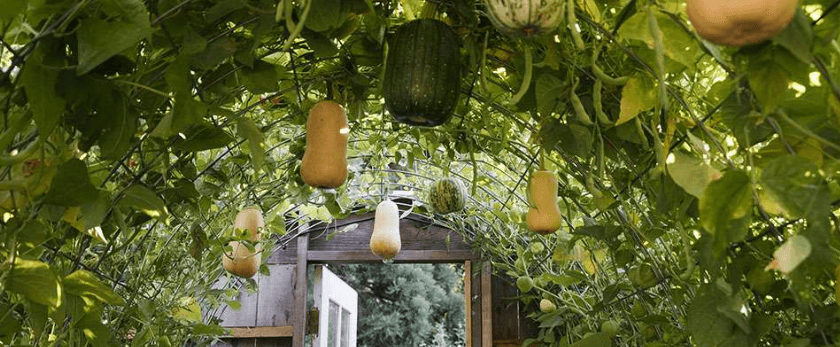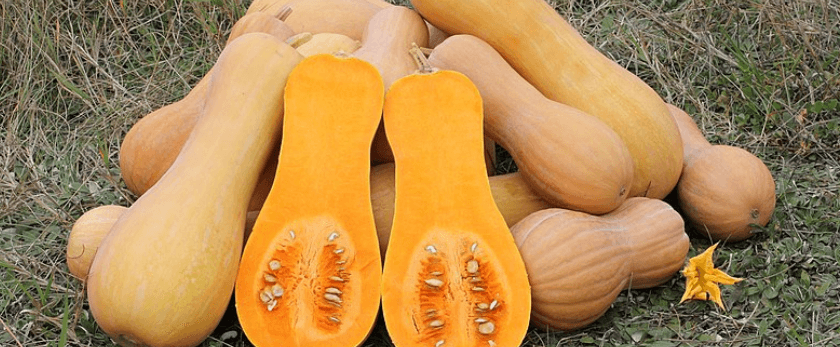Butternut squash is a delicious and versatile vegetable that can be used in a variety of dishes, from soups and stews to roasted side dishes and even desserts. Not only is it tasty, but it is also packed with nutrients and is relatively easy to grow in your own backyard. In this article, we will discuss the steps to successfully grow butternut squash, from caring for the plant to common problems and solutions.
Caring for Butternut Squash
Watering
Butternut squash plants require consistent watering to thrive. They prefer moist, but not waterlogged, soil. It is important to water deeply, at least 1 inch per week, rather than frequent shallow watering. This will encourage the roots to grow deeper and make the plant more resilient to drought.
During the first few weeks after planting, it is important to keep the soil consistently moist to help the seeds germinate. Once the plants have established, you can reduce the frequency of watering, but make sure to check the soil moisture regularly and water as needed.
Light
Butternut squash plants need full sun to grow and produce fruit. Make sure to choose a spot in your garden that receives at least 6-8 hours of direct sunlight per day. If you are growing in a container, make sure to place it in a sunny location and rotate it regularly to ensure all sides of the plant receive adequate sunlight.
Soil
Butternut squash plants prefer well-draining, fertile soil. Before planting, amend your soil with compost or well-rotted manure to provide the plant with the necessary nutrients. The ideal pH for butternut squash is between 6.0-6.8. You can test your soil's pH using a home testing kit or by sending a sample to a local extension office.
Fertilizer
Butternut squash plants are heavy feeders and will benefit from regular fertilization. You can use a balanced fertilizer, such as a 10-10-10, every 2-3 weeks during the growing season. Alternatively, you can use organic fertilizers, such as compost or fish emulsion, to provide the plant with nutrients.
Pruning
Pruning is not necessary for butternut squash plants, but it can help improve air circulation and prevent diseases. You can remove any dead or damaged leaves and trim back any vines that are growing too long. However, be careful not to remove too many leaves as they are essential for photosynthesis and fruit production.

Best Time to Grow Butternut Squash
Butternut squash is a warm-season crop and should be planted after the last frost date in your area. The ideal soil temperature for planting is between 60-65°F. You can start seeds indoors 3-4 weeks before the last frost date and transplant them outdoors once the soil has warmed up.
If you live in a colder climate, you can also start seeds indoors and transplant them into a greenhouse or use a cold frame to extend the growing season. Make sure to harden off the plants before transplanting them outdoors to prevent shock.
Common Problems with Butternut Squash
Pests
Butternut squash plants are susceptible to a few common pests, including squash bugs, cucumber beetles, and squash vine borers. These pests can cause damage to the leaves and stems of the plant, leading to reduced growth and fruit production.
To prevent pest infestations, make sure to keep your garden clean and free of debris, as these pests overwinter in plant debris. You can also use row covers to protect your plants from pests, or handpick them off the plants if you notice any signs of infestation.
Diseases
Butternut squash plants can also be affected by various diseases, such as powdery mildew, downy mildew, and bacterial wilt. These diseases can cause wilting, yellowing of leaves, and reduced fruit production.
To prevent diseases, make sure to provide adequate air circulation by spacing out your plants and removing any diseased leaves. You can also use organic fungicides to prevent and treat diseases.
Blossom End Rot
Blossom end rot is a common problem with butternut squash plants, where the bottom of the fruit turns black and rots. This is caused by a calcium deficiency in the plant, which can be due to inconsistent watering or low soil pH.
To prevent blossom end rot, make sure to water your plants consistently and maintain a proper soil pH. You can also add calcium to the soil by using crushed eggshells or a calcium-rich fertilizer.
Responsible Disposal Methods
Once you have harvested your butternut squash, it is important to dispose of any plant debris responsibly. Do not compost any diseased plant material, as it can spread diseases to your other plants. Instead, dispose of it in the trash or burn it.
You can compost healthy plant material, such as leaves and vines, to create nutrient-rich compost for your garden. Make sure to follow proper composting guidelines to ensure the compost reaches high enough temperatures to kill any potential pests or diseases.
Conclusion
Growing butternut squash is a rewarding experience that can provide you with delicious and nutritious vegetables. By following the tips and techniques outlined in this article, you can successfully grow butternut squash in your own backyard. Remember to care for your plants by providing adequate water, sunlight, and nutrients, and be on the lookout for common problems and solutions. And don't forget to dispose of any plant debris responsibly to help maintain a sustainable and eco-friendly garden. Happy growing!










